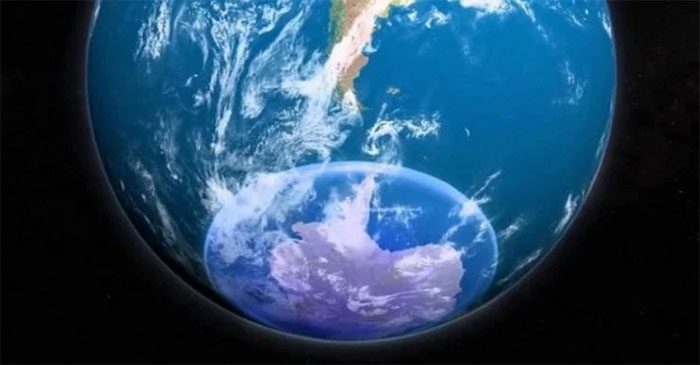Scientists have discovered that the decline in ozone and deeper holes are a result of changes in the Antarctic polar vortex, a large whirlpool of low pressure and extremely cold air high above Antarctica.
The recovery of the ozone layer, which protects the Earth from ultraviolet radiation, has been noted as one of the world’s greatest environmental achievements.
However, in a newly published study on November 21, New Zealand scientists suggest that the ozone layer may not be recovering at all, and the hole could even be expanding.
This finding contradicts widely accepted previous assessments regarding the status of the ozone layer, including a recent United Nations-backed study suggesting that by 2040, the ozone layer could return to its state from the 1980s.
In 1987, many countries agreed to ban or reduce the use of over 100 ozone-depleting chemicals, creating a hole in the ozone layer above Antarctica.

The ozone layer may not be recovering at all, and the hole could even be expanding. (Illustrative photo: AP).
This decline is primarily caused by the use of chlorofluorocarbons – also known by the acronym CFCs, commonly found in aerosol sprays, solvents, and refrigerants.
The ban was agreed upon through the Montreal Protocol and is considered effective in supporting the recovery of the ozone layer.
However, the aforementioned hole – which typically expands in spring before shrinking in summer, reached a record size during the period from 2020 to 2022, prompting New Zealand scientists to investigate the causes.
They analyzed monthly and daily fluctuations at various altitudes and latitudes in the ozone hole over Antarctica from 2004 to 2022.
In a research report published in Nature Communications on November 22, scientists stated that ozone concentrations have decreased by 26% since 2004 at the center of the hole during spring.
Dr. Hannah Kessenich, a scientist from the University of Otago and the lead author of the study, said: “This means that the hole is not only still wide but also deeper for most of the spring in Antarctica.”
Dr. Kessenich further noted: “The ozone holes persisted particularly long during the years 2020-2022, which aligns perfectly with this observation, as the size and depth of the hole in October were particularly significant in all three of these years.”
To reach this conclusion, scientists analyzed the state of the ozone layer from September to November using satellite data.
They utilized historical data to compare the state and changes in ozone concentrations while measuring signs of ozone recovery. They then sought to identify the causes of these changes.
Scientists found that the decline in ozone and the deeper holes are a result of changes in the Antarctic polar vortex, a large whirlpool of low pressure and extremely cold air high above Antarctica.
The authors of the study did not delve deeper into the causes of these changes but acknowledged that many factors may have contributed to the ozone depletion, including pollution from global warming, fine particles in the air from wildfires and volcanic activity, as well as changes in the solar cycle.
Dr. Kessenich stated: “Overall, our findings suggest that the large recent ozone holes may not be solely caused by CFCs. Therefore, although the Montreal Protocol has been remarkably successful in phasing out CFCs and preventing environmental disaster, the persistent ozone holes over Antarctica seem closely related to changes in atmospheric dynamics.”
However, some scientists are skeptical about the results of this study, noting that it primarily relies on observations of the holes from 2020 to 2022 and uses a short timeframe – just 19 years – to draw conclusions about the long-term status of the ozone layer.
Scientist Martin Jucker from the Climate Change Research Centre at the University of New South Wales (Australia) argued that the ozone hole is extremely variable year to year, so a longer study period is required to identify a trend.
He pointed out: “Existing literature has identified the causes of these large ozone holes, including smoke from the 2019 wildfires and the eruption of La Soufrière volcano, as well as the general relationship between stratospheric polar dynamics and the El Niño-Southern Oscillation.
According to him, during years of La Niña, the polar vortex in the stratosphere tends to be stronger and colder than normal, meaning that ozone density will also be lower in those years. The period from 2020 to 2022 saw three La Niña events – a rare occurrence, but this relevant data was not mentioned in the study.
Jucker also noted that the authors of the study stated they excluded data from the years 2002 and 2019 during their research to ensure that “special events” did not skew the results.
He emphasized: “Those events significantly reduced the size of the ozone hole, so including those events in the study could negate long-term negative trends.”


















































